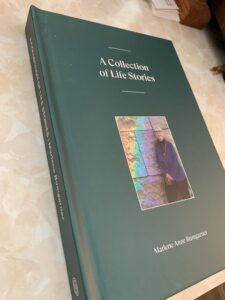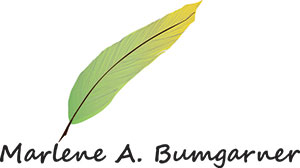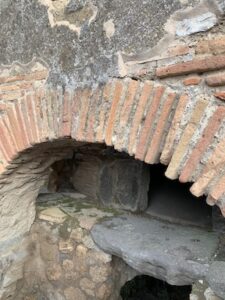A New Year – Traditions
The idea of celebrating the beginning of a new year is ancient and transcends culture and geography. And the traditions followed during those First Day celebrations vary widely.
I like the Scottish tradition of cleaning the house from top to bottom on New Year’s Eve. The expression “clean sweep” could certainly apply to that activity, which includes sweeping out the fireplace.
Jewish families deep-clean their homes in preparation for Passover, but Rosh Hashanah marks the first and second days of the Jewish year, and traditions then include hearing the sounding of a ram’s horn (shofar), lighting candles, and eating festive meals with sweet delicacies such as challah bread and apples dipped in honey. Count me in!
In Spain, many people eat grapes on New Year’s Eve. According to custom, if you eat a dozen grapes by the time the clock finishes chiming midnight, you will have good luck for the year ahead.
I spent Christmas in Sorrento, Italy this year, and asked my host what she would be doing on New Year’s Eve. A local tradition, she told me, is the lighting of the ciuccio di fuoco, a donkey made of fabric stuffed with fireworks. The donkey represents the old year and it is set on fire at midnight to ignite the pyrotechnics. It symbolizes burning and obliterating bad memories from the year before. At midnight, she said, the streets would be full of people exchanging good wishes, toasting the New Year, and enjoying the festive atmosphere in that magical city filled with lights and colors. It was easy to imagine, having seen those same streets crowded with happy people on Christmas Eve as we walked back to our hotel from a sacred concert.
Growing up in an enclave of Brits, I enjoy reprising the English and Scottish tradition of singing “Auld Lang Syne” with family and friends at midnight. That nostalgic tear-jerker is based on a poem by Robert Burns and reflects on the importance of remembering old friends and shared experiences.
In contrast, citizens in Ecuador, “parade around the city with scarecrows built to look like popular politicians and cultural icons—and at the stroke of midnight, said scarecrows are burnt to a crisp to cleanse the new year of everything evil,” according to Carrie Weisman and Morgan Greenwald of Best Life, That tradition particularly appeals to me as we begin 2025.
Hopes for the Future
It has been a difficult year, but we got through it. Now it’s time to look ahead with confidence and optimism. Find opportunities to build up, not tear down. To encourage dialog, not to shut down communication. I am determined to go forward waging peace and defending our democracy. I hope you will too.
Happy New Year! Marlene
* * * *
Postscript:
Several of you have commented on my family’s experience with StoryWorth and asked about the final product. The printed book, A Collection of Life Stories, was on my doorstep when I returned from Italy. It is beautiful, and destined to be a family heirloom. Only five copies have been printed, but I’m as proud of our family’s achievement as if it were a best seller.
heirloom. Only five copies have been printed, but I’m as proud of our family’s achievement as if it were a best seller.
Marlene Anne Bumgarner writes primarily about food, family, and traditions. Her 2020 memoir, Back to the Land in Silicon Valley, is about raising children, animals, and vegetables on a rural plot of land in the 1970s. Organic Cooking for (not-so-organic) Families will be out soon, and she’s now working on an update to The Book of Whole Grains while also crafting a cozy mystery, Death on a Sunny Afternoon – a Harriet Palmer Mystery.
Share this post





I was interested to see the photo of an outdoor hearth in this post and am thinking I’ve seen it before in Los Gatos.
Have you seen this type of improvised masonry in the Silicon Valley
from in the old days.
And will you be coming back to the area any time soon?
I missed seeing you at your book events.
Gianna Walker
Gianna,
I took the photo of the outdoor hearth at Pompei, during my recent visit to Italy. I suspect the hearth you saw in Los Gatos was inspired by Roman architecture.
I do hope to visit northern California in May.
Marlene
Ballet class??! Good for you! I started taking ballet classes when I was about 50. I love the art form, the music, the camaraderie, the challenge. I hope you do too!
Lisette,
I thought you would approve!
Marlene
Lovely thoughts and writing, as always, Marlene. I’m so glad you had your Sorrento experience to cushion the impact of fire-geddon in the area of your home. I hope you and yours can return to normalcy. As for the year ahead, while walking the knife-edge of despair, I’ll carry the water of hope to throw on the fires burning at the Capital. Blessings, Erik
I love the idea of releasing or burning up negative energy. Why carry that stuff around with you and let it weigh down what’s happening now? I appreciate your sharing. Sounds like you are moving a positive foot into the new year. Just what we all need now.
Thanks for recognizing the core of my message, Gaby. Yes, I’m definitely moving a positive foot into the new year. I’ve even signed up for a senior’s ballet class!
Happy New Year, Marlene! I love hearing about the New Year’s traditions of others. Can’t say that we have a particular one ourselves at this point, but I really love the idea of some sort of cleansing.
Seems like a common theme, doesn’t it, Helen?